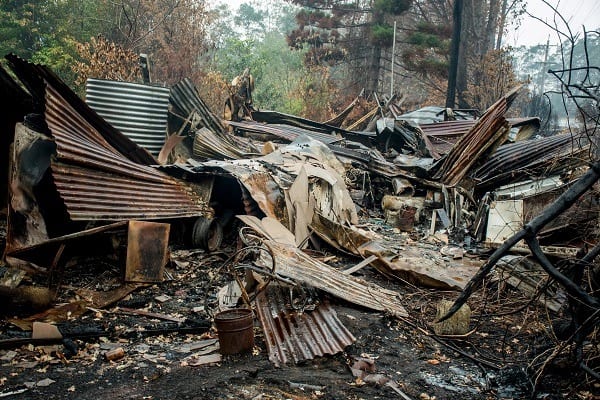Thousands of residents on NSW’s south coast and in Victoria have been forced from their homes due to bushfires. More than 1,800 homes have been lost in NSW and Victoria. The federal government has announced a $2 billion funding package to revive towns decimated by the fires, but there are now Australians who have no way of knowing how long it will be until they can return to their homes – if ever.
As Minister for Families, Communities and Disability Services Gareth Ward told journalists: “We have people literally living in motels, in sheds and in tents.”
At the same time, citizens are fleeing smoke filled cities in search of clean, breathable air. As one bushfire said last week, “We are Australia’s first climate refugees.”
For the first time, Australians are being forced to acknowledge that climate change is a humanitarian issue that can intrude on developed countries as well as the developing.
Climate change is one of the factors behind the record 70.8 million people who are currently forcibly displaced from their homes around the world. A significant proportion of that figure comprises people who are displaced within their own countries.
The number of people who need humanitarian assistance due to climate change is already at an estimated 108 million. This is likely to double by 2050.
Climate related humanitarian costs will escalate to up to $US20 billion a year by 2030.
Many of us have thought climate change displacement was a problem that only affected the world’s poor or vulnerable, like coastal communities in Bangladesh that are gradually disappearing under water, or the people living in Middle Eastern refugee camps facing severe flooding and freezing weather.
This “othering” is why so many argue against raising our refugee intake from the current cap of 18,750, despite this accounting for a small proportion of our 160,000-plus permanent migration intake, let alone the more than two million temporary visa holders living in Australia at any given time.
Something I’ve repeatedly heard in conversations with refugees from Syria who have resettled in Australia is, “we never thought it would happen here.”
Before the civil war, they lived lives of relative stability – learning trades, going to university, building careers and families. One young woman told me it wasn’t a lack of awareness – she had followed the news of uprisings in Libya and Egypt with interest. She just never thought it would happen in her own back yard.
The confronting reality is that, with these bushfires, Australians now join war-affected Syrians and drought-affected Kenyan farmers among the internally displaced.
As a country, there are three things we must consider. Firstly, addressing climate change as a humanitarian issue and developing scientifically backed policy to reduce our direct and indirect contribution to our changing climate.
We must also prepare for the reality of involuntary movement of people within our own country due to our changing climate. Along with escalating bushfires, numerous towns across the country are heading ever closer to “day zero” of water supply. What will happen to these residents when their homes are no longer habitable?
And while looking at our own backyard we must not forget our neighbours. As a developed nation, Australia has a responsibility to take an active role in the global refugee crisis, including unfreezing our refugee intake and exploring complementary settlement pathways such as a Community Sponsorship Program.
With a global crisis now at our doorstep, it is time for decisive and compassionate action.


